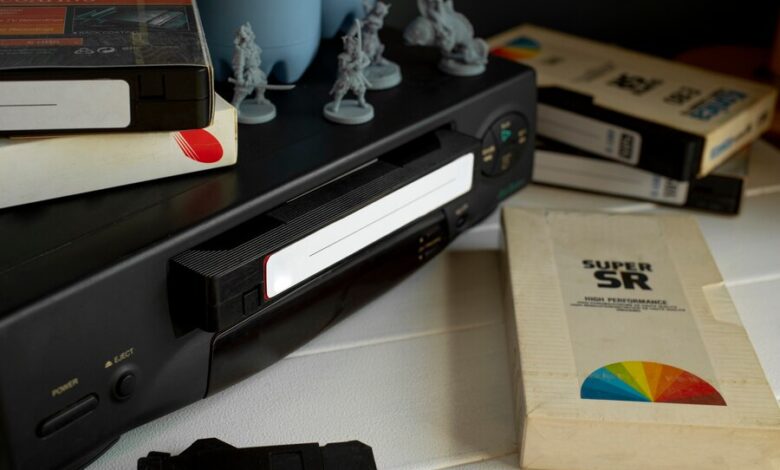Thermal Transfer vs. Direct Thermal Printing: What’s the Difference?
Thermal Transfer vs. Direct Thermal Printing


Thermal Transfer vs. Direct Thermal Printing: What’s the Difference?
The world of printing can be surprisingly complex, even for seemingly simple tasks like printing labels. If you’re looking for a printer for receipts, shipping labels, or identification tags, you might come across two terms: direct thermal and thermal transfer.
Both use heat to create an image, but they differ in how they achieve that and the kind of results they produce. This blog post will break down the key differences between these two printing technologies to help you choose the right one for your needs.
The Magic of Thermal Printing
At the heart of both direct thermal and thermal transfer printing lies heat. A printhead, similar to the one in your inkjet printer, traverses across the printing material. But unlike inkjet printers that use liquid ink, a thermal transfer label printer Qatar relies on heat to create the image.
Direct Thermal: Simple and Fast for Short-Term Needs
Imagine a label coated with a special chemical that reacts to heat like magic. That’s the essence of direct thermal printing. The printhead heats up in specific areas, causing a reaction in the coating, typically turning it black. This creates the text, barcodes, or images you see on the label.
Pros of Direct Thermal Printing
- Simplicity: Direct thermal printers are generally more affordable and easier to use. They don’t require ribbons or toners, just heat-sensitive labels.
- Speed: Direct thermal printing is often faster than thermal transfer as there’s no ribbon involved.
- Compact Design: Simpler technology translates to smaller and lighter printers, making them ideal for limited spaces.
- Good for Short-Term Applications: Direct thermal prints are perfect for labels with a short lifespan, like receipts (lasting a few hours), shipping labels (lasting a few weeks), or basic identification badges (lasting a few months).
Cons of Direct Thermal Printing
- Fading: Direct thermal prints are susceptible to fading over time, especially with exposure to light, heat, or chemicals. This makes them unsuitable for long-term applications.
- Limited Material Options: Direct thermal labels require a specific chemical coating, limiting the materials you can print on. They typically work best with paper-based labels.
- Sensitivity: The heat-sensitive coating can be easily scratched or smudged, reducing the quality of the print.
Thermal Transfer: Durable Prints for Long-Lasting Needs
Think of thermal transfer printing as a more elaborate version of direct thermal. Here, the printhead heats a separate ribbon coated with wax or resin instead of the label itself. The heat melts the wax or resin, transferring it to the label material and creating a more permanent image.
Pros of Thermal Transfer Printing
- Durability: Thermal transfer prints are highly resistant to fading, scratches, moisture, and extreme temperatures. They can last for years, making them ideal for applications like product labels, chemical labels, or asset tags.
- Versatility: A thermal transfer label printer can print on a wider range of materials, including synthetics, plastics, and even fabrics. This allows for more flexibility in your label choices.
- Multiple Colors: Unlike direct thermal (which is typically limited to black), thermal transfer printers can use ribbons with different coloured waxes or resins, allowing for multi-coloured printing.
Cons of Thermal Transfer Printing
- Cost: Thermal transfer printers are generally more expensive than direct thermal printers due to the additional cost of ribbons.
- Complexity: Replacing ribbons adds a step to the printing process compared to direct thermal.
- Slower Speed: The melting and transfer process takes a bit longer than direct thermal printing.
- Larger Footprint: Thermal transfer printers tend to be bigger due to the ribbon mechanism.
Choosing the Right Printing Method: A Quick Guide
Here’s a simple breakdown to help you decide which method is best for your needs:
- Need fast, affordable labels for short-term use (receipts, shipping labels)? Choose direct thermal.
- Need durable, high-quality labels that last for years (product labels, chemical labels)? Choose thermal transfer.
- Printing on a variety of materials (synthetics, plastics)? Choose thermal transfer.
- Limited budget and space? Choose direct thermal.
- Need multi-coloured prints? Choose thermal transfer.
Beyond the Basics: Additional Considerations
While the core differences lie in durability and material options, there are a few other factors to consider:
- Printing Volume: If you’re printing a high volume of labels, the cost of ribbons in thermal transfer might be a deciding factor.
- Environmental Concerns: Direct thermal labels are typically not recyclable, while some thermal transfer labels are. Consider your eco-friendly options.
- Integration with Existing Systems: Ensure the printer you choose is compatible with any software or systems you use for label creation.
Advanced Features and Applications
Now that you understand the core differences between direct thermal and thermal transfer printing, let’s delve into some advanced features and applications to help you make an even more informed decision:
Ribbon Types for Thermal Transfer Printing
As mentioned earlier, thermal transfer printers use ribbons with different materials to achieve specific results. Here’s a breakdown of the most common types:
- Wax Ribbons: These are the most economical option, offering good print quality on paper labels. However, they are less durable and not ideal for harsh environments.
- Wax/Resin Ribbons: Combining the affordability of wax with some of the durability of resin, these ribbons offer a good balance for applications requiring moderate resistance to abrasion and chemicals.
- Resin Ribbons: The most durable option, resin ribbons provide excellent resistance to fading, scratches, chemicals, and high temperatures. They are ideal for long-lasting labels on a variety of materials, including synthetics and plastics.
Speciality Printing
Both direct thermal and thermal transfer printing offers some specialty options for specific needs:
- Linerless Labels: These labels come without a backing paper, reducing waste and allowing for more labels on a roll. They are typically used with thermal transfer printing for added durability.
- High-Resolution Printing: For applications requiring fine details or small text, some thermal transfer printers offer high-resolution printing capabilities.
- Colour Printing: While not as common as monochrome printing, thermal transfer allows for vibrant colour labels using ribbons with coloured resins.
Applications
Here are some specific examples of how direct thermal and thermal transfer printing are used in various industries:
Direct Thermal
- Retail: Receipts, price tags, and short-term inventory labels.
- Logistics & Shipping: Shipping labels, packing slips, and warehouse labels.
- Healthcare: Prescription labels, patient wristbands, and temporary identification badges.
Thermal Transfer
- Manufacturing: Product labels with barcodes and logos, durable identification tags for assets.
- Chemicals & Pharmaceuticals: Labels with chemical resistance for safety information.
- Food & Beverage: Durable labels with expiration dates and nutritional information.
The Final Verdict
There’s no single “best” printing method. The choice between direct thermal and thermal transfer hinges on your specific requirements. Consider factors like the lifespan of your labels, the materials you need to print on, printing volume, budget constraints, and desired print quality.
By understanding the strengths and weaknesses of each technology, you can make an informed decision that ensures your labels are not only functional but also meet your long-term needs.









